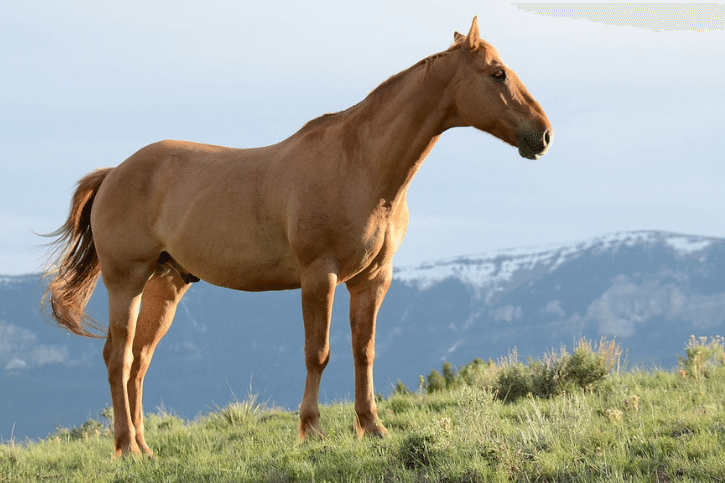What Is A Male Horse Called?
A male horse can have a few different names depending on the stage of its life its in, as well as some other factors.
I knew that there were a lot of different terms to describe horses of all sexes and ages, so I wasn’t exactly sure what each of the different names meant.
I had an idea, but I wanted to be sure, so I decided to look into it and find out.
So, what is a male horse called?
A mature male horse is called a stallion. Younger male horses, below the age of four, are called colts. These are the main terms for horses, although they can also be called geldings if they have been castrated. Stallion is the most widely used term for a male horse.
Stallion is certainly an easy enough one to remember, since we hear it so often, and it certainly conjures a certain image for many of us.
Stallions are great, majestic beasts with flowing manes, and it’s easier to remember stallion as male.
Let’s look at the different terms in a bit more detail.
What is a male horse called?
A mature, male horse, that is uncastrated, is called a stallion.
This is the universal name for mature male horses, and probably one you’re most familiar with.
There’s nothing complicated about the term stallion, and is the most used term for describing male horses.
The term has its origins in Middle English (staloun or stalion) and Anglo-French estaloun.
The meaning of the term has been constant since at least the 14th Century, when it still meant a male horse.
Often, the term stallion is used to describe breeding male horses. Many horses, racehorses especially, are retired to breeding farms at early ages as their racing careers usually don’t last beyond the age of 5.
If they had a successful racing career, though, their genes are very valuable, and they are used to sire new horses hopefully to be sold to racers.
These are also called stud farms, the ‘stud’ being the breeding male.
So, there is yet another term to describe male horses, but stud is exclusively about breeding.
Stallion may often be used to refer to a horse as actively breeding, but the term is in actual fact a catch-all for any mature male that is capable of breeding.
Some male horses are not stallions, as I will get into.
What is a colt?
The other primary term for male horses is colt.
The distinction between a colt and a stallion is age.
Colt describes a male horse that is younger than 4 years old.
Stallions are fully mature.
Horses live on average about 15 years, give or take, so a colt is still very young, even though it might appear fully mature.
One of the main reason young males have a special name is, as I’ve mentioned, the racing industry.
Most racehorses, males especially, only race for about the first five years of their lives.
After that, they tend to retire.
Some go on for a lot longer, but generally not.
What might seem like inconsequential distinctions to us are actually really important to those breeding horses, then, for racing but for other things too.
The difference between 2 years old and 4 years old can be a huge difference in performance, so having the colt category helps lessen confusion over a horse’s age.
It helps people pin down the age of a horse.
The other type of male horses is known as a gelding.
So let’s look at what that might mean.
What is a gelding?
Simply put, a gelding is a male horse that has been castrated.
This is common practice with many domestic animals, though the term gelding is unique to horses.
For any male horse that is not intended for breeding there is always the possibility they will be castrated, or gelded.
The term gelding has nothing to do with a horse’s age, although they are usually castrated at a young age.
Once they have been, however, they are generally only referred to as a gelding; typically not as a colt and never as a stallion.
As I said, a stallion always has the potential to breed, even if it isn’t actively breeding at the time.
This is why geldings are not stallions.
So why is this practice done?
There’s quite a simple answer.
Why are horses castrated?
The primary reason horses are castrated is to curb male behavior.
Most male horses that aren’t intended to be bred are castrated for simple convenience; when a horse is castrated, it does not mature in the usual way, and does not develop the characteristically aggressive and domineering behavior of a breeding stallion.
Horses are too aggressive to handle sometimes, when they are not castrated.
So, there are essentially three different names for male horses, but the most important one is stallion.
Mature, male horses are called stallions, and male horses younger than four are called colts.
It’s really important for horse breeders to be able to make these subtle distinctions, as a small difference between horses can make all the difference when it comes to breeding them, especially for racing.
Racehorses often don’t race past the age of four, so those early years are really essential.
